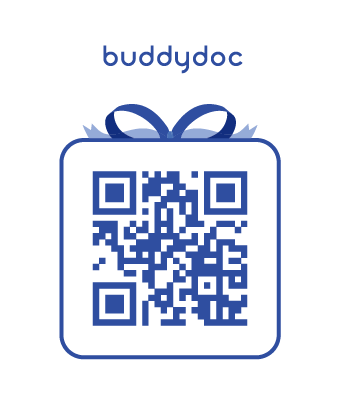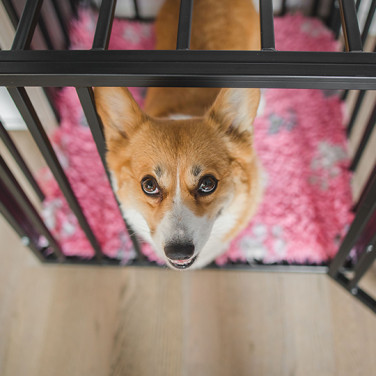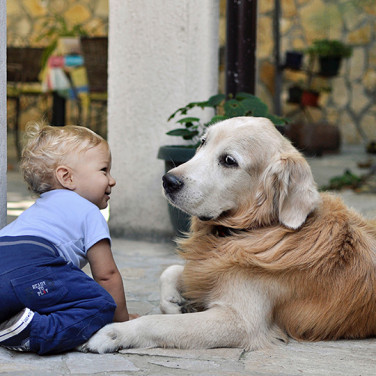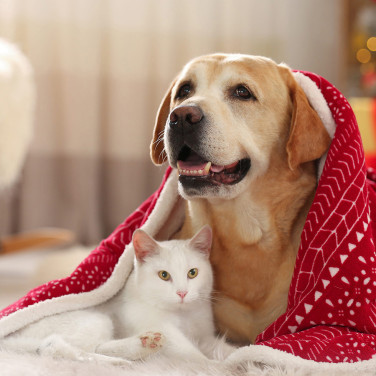ARTICLE
Dog Recall Training - How-to Guide and Tips to Train Your Puppy
페이지 정보
본문


What is reliable recall?
As a pet parent, reliable recall training is essential for any pet parent as it helps in maintaining your dog's safety and building a strong bond between you and your dog. Recall training ensures that your dog responds promptly to your call, no matter the situation to ensure they stay safe and happy longer. Being able to call your dog back to you under any circumstance is an important skill that can prevent accidents and form a positive relationship between you and your pup. However, recall training can be challenging, especially for new pet parents. In this article, we'll outline the most reliable recall training techniques that will help you train your dog effectively and efficiently.
Preparing for recall training
Before starting your pup’s recall training, it's important to understand your dog's personality and their characteristics. Understanding your dog's motivators, whether they are treats or toys, will help in this training process. Choosing the right location for training is crucial as well, as it should be an environment with minimal distractions. You should ensure you have the right equipment, such as a leash, treats, and a long line for distance training. Scheduling training sessions when your dog is most alert and focused can help show progress quicker. The active window for most dogs usually resides from 8 am to 10 am and from 5 pm to 11 pm, so plan accordingly to your schedule.
The different dog personalities
According to your dog’s personality, here are a few tips you can apply to your training sessions!
-
The runner
If your dog is hyperactive and tends to run away from you often, it may be best to use a leash and collar during training to bring more focus out of your zoomer.
-
The playful
The social and playful puppies can turn any activity with you into a game and tend to respond better to playful training tactics.
-
The puppy
It is recommended to start any type of training at around 8 weeks old. It is important to keep training at this stage very simple and short. A good rule of thumb is 5 to 10 minutes of training.
-
The stubborn
Some dogs are difficult to receive any type of training and may even require a behavioral specialist to help with dogs that are easily distracted and resistant to traditional training tactics. You can, however, be more creative with training these personalities. Use mealtimes as a way to condition your recall command as they come running for their reward/food bowl. The same can be applied to anything that grabs your dog's attention, such as grabbing the leash for walks, grabbing their favorite toy, or simply when they are approaching you to show some daily love. At any given point they are fixated on you as they approach you, use your recall command and a treat to help train those difficult pups.
Basic recall training for dogs
After you’ve picked your recall command, such as “Buddy, come” or “Buddy, here” you will stick to that word as it will help build the foundation of reliable recall training. Positive reinforcement, gradual increase in distance, and implementing distractions are essential parts at the beginning of training your dog reliable recall.
Start indoors and in a quiet environment to ensure that your dog does not get distracted at the goal of the training. Begin by calling your dog's name to get their attention and use your recall command while stepping away from them. When they come to you, reward them with praise and a high-quality treat. It's important to make sure that the rewards are tempting, especially if your dog has been distracted by something else on the way to you. While calling your dog, use a happy and excited tone with positive body language such as crouching down to their level with your arms open. No matter how long it takes, always praise your dog for coming back. Once your dog becomes proficient in responding to your recall command, you can increase the difficulty of the training or gradually reduce the frequency of treats. Incorporating games such as hide and seek and the chase me game will also make training enjoyable for your dog.
Advanced recall training for dogs
Transitioning to a more difficult level of recall training to ensure reliable recall is by increasing the distance between you and your dog. If you were using a leash before, it is time to take it off and see how well your dog responds to their training in a safe and enclosed environment. As your dog is better attuned to their new command, you can let them go as far as the other side of the lawn. Allow them to get distracted before using your recall command. If your dog comes back to you on command, your dog is ready for the last stage in recall training.

Proofing is where the real challenge begins because dogs love playing at the dog park and meeting all their friends. Proofing shows the results of your hard work and training as you introduce different environments, people, and other animals. A properly trained dog will come back to you ever- almost every time you use your recall command. A good way to positively reinforce your dog at this stage of training is by praising them and letting them go back to playing. You do not want your puppy to associate the command with something negative such as playtime is over. When it is actually time to leave, you can use other cues such as approaching them with their leash instead of using the command. The last essential step in safe and reliable recall is recalling without an incentive. The value of reliable recall is to save your pet from a dangerous situation and sometimes you will not have a treat to convince your pet to come back to.
Frequently asked questions about recall training puppies

When is the right time to start recall training my puppy?
Pet parents often wonder when the right time is to start recall training their puppies. The answer is that it's never too early to start training your puppy. However, we recommend starting any type of training at around 8 weeks old. It is also essential to start with simple commands in short sessions and gradually increase the distance and distractions as your puppy becomes more comfortable and responsive.
How long does it take to recall train a puppy?
The time it takes to recall train a puppy depends on various factors, such as the breed, age, and individual personality of your puppy. Generally, it takes several weeks to several months of consistent training to achieve reliable recall in puppies. It is important to always remain patient, consistent, and use positive reinforcement to make training more enjoyable for your puppy.
What should I do if my puppy doesn't come when called?
What you shouldn’t do is change your tone of voice, scold, or punish them under any circumstance. That will only take away from the training process and make your puppy less responsive. Instead, use positive reinforcement to encourage your puppy to come to you, such as a high-value treat or their favorite toys. Also, ensure that you're using a clear and consistent command and that your puppy is not distracted by their surroundings. If your puppy continues to struggle with recall training, consider consulting with a professional dog trainer for additional guidance and support.
Checklist for reliable recall training your puppy like a pro!
- Choose a quiet and distraction-free location to start the training process.
- Get your dog's attention by calling their name, making a noise, or using a command such as "come."
- Reward your dog for responding to your call with high-value treats, praise, or playtime. Positive reinforcement reinforces the desired behavior and makes training more enjoyable for your dog.
- Increase the distance gradually by moving away from your dog and calling them to you.
- Introduce distractions such as toys, other people, or other dogs gradually. Start with minor distractions and increase them as your dog gets more comfortable.
- Use a long leash for distance training and to provide extra control and safety for your dog.
- Be patient and consistent. Recall training takes time, so practice frequently and in different environments to increase your dog's comfort level.
- Once your dog is responding reliably to your call, start practicing off-leash training in a safe and enclosed area.
- Proof your dog's training by practicing recall in different environments and introducing different distractions such as loud noises or unfamiliar people.
- Gradually reduce the frequency of treats and instead reward with high praise and a positive tone.
Conclusion
Recall training may take time for certain dogs, but patience and consistency will prevail and will be well worth your dog’s safety and happiness. By following this guide and reviewing the checklist, your dog will master this command and in return, a healthier bond between you and your dog can help prevent accidents and ensure a lifetime of happy adventures together!
Read more on the Buddydoc blog page!

Buddydoc provides a weekly updated blog to keep you informed on the latest and best ways to prepare and take care of your pet all year round. Check out more articles you may be interested in!













